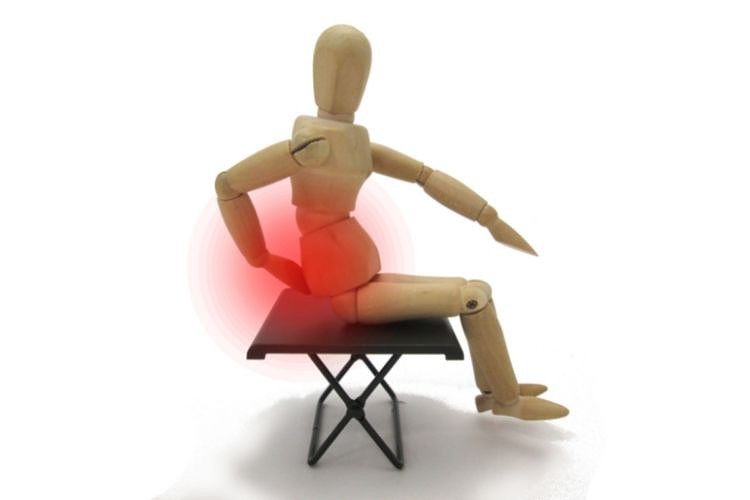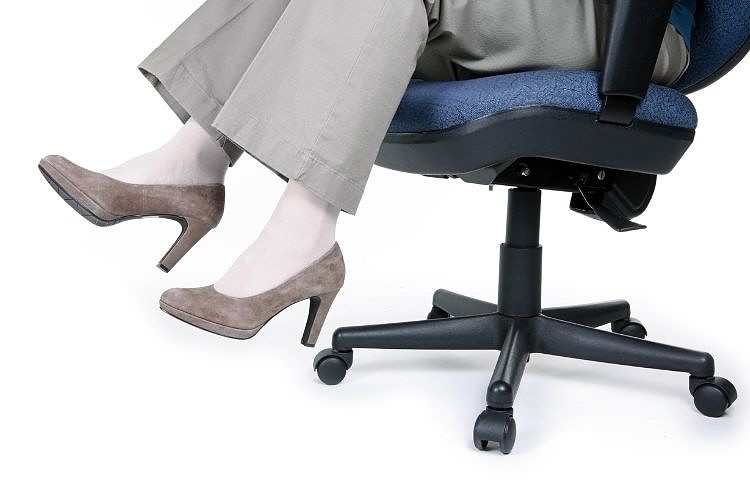Do you often experience pain every time you sit on your office chair?
If you do, you aren’t alone.
You’re one of the millions of people experiencing pain in their tailbone area or the area between the buttocks and the very bottom of the spine.
The tailbone or the coccyx serves as an insertion site for different muscles, tendons, and ligaments.
Along with two other bones (sit bones), the tailbone also functions like a tripod leg. It provides support to the body while it’s in a seated position.
If you experience pain whenever you sit, that means there’s something wrong with your tailbone or that you’re doing something that puts too much pressure on it.
This pain is often referred to as tailbone pain or coccydynia.
Table of Contents
What causes tailbone pain when I sit?

Coccydynia can happen for multiple reasons.
The most common reason is due to long periods of sitting on hard uncomfortable surfaces.
If you spend most of your day seated, you’re constantly putting a strain on your tailbone. More so if you’re using a monobloc chair or an office chair without sufficient padding and a backrest.
You may not feel the strain at the beginning, but as you continue to stay seated throughout the day, this strain intensifies. With padding, you can lessen some of this strain.
Also, if you’ve recently had a nasty fall that fractured your tailbone, padding is essential if you want to avoid feeling intense pain whenever you sit.
A backrest also helps in providing extra support to the spine and the whole body.
Another reason why you may experience coccydynia is your chair configuration.
An office chair that isn’t properly adjusted to suit your weight, height, and posture can put your body in an awkward position.
Just imagine squeezing yourself in an office chair that’s too small and can’t properly support your weight. Sounds painful, right?
If you have a poorly padded maladjusted chair, tailbone pain is just one of the worries you’ll have to face.
Other reasons that contribute to tailbone pain when you sit are obesity, damage to the joints, and a sedentary lifestyle.
Can sitting posture cause tailbone pain?

Definitely. Poor sitting posture is closely tied to coccydynia.
In particular, a reclined sitting position puts the most strain on your tailbone.
When you recline, the pressure is tilted towards it. The weight distribution is uneven, so your tailbone is taking on more weight than it can carry.
Remember when you said that that tailbone is like one of the legs in a tripod?
What do you think will happen if only one leg is supporting the whole body?
That’s right. The leg cracks or strains.
This is what happens to your tailbone if you have poor sitting posture.
The more you recline and the more pressure you put on your tailbone, the more intense your coccydynia becomes.
How can I stop my tailbone from hurting when I sit?

Coccydynia often starts mild and gradually intensifies over time if nothing is done to keep the stress off the tailbone.
The best way to stop it is to invest in posture assistive devices and other similar products that can ease the strain on your tailbone.
An office chair with tilt adjustment and lumbar support is one such product.
If you can tilt your chair backward and forwards, it’ll be easier to find the best position for easing tailbone pain.
Ideally, your chair should allow a sitting posture that results in the even weight distribution between the tailbone and your ischial tuberosity or “sit bones”.
A slightly leaned forward position is the best position to achieve this.
If you already own an office chair and don’t want to shell out extra money for a new one, consider investing in a memory foam seat cushion .
These cushions are made specifically to address tailbone pain. They are ergonomically designed to relieve pressure on your tailbone by distributing the weight load evenly between your sit bones and your tailbone.
Seat cushions also promote healthy sitting posture.
Aside from using assistive devices, you shouldn’t also forget to get up from your seated position once in a while.
Doing this relieves the pressure on your tailbone and improves your spine alignment. Stretching also works in easing the pain, improving circulation, and keeping you alert.
How can I relieve tailbone pain?

There are instances when tailbone pain goes away on its own. Using the right office chair plays an important role in that.
If you wish to relieve your tailbone pain, make sure your office chair has proper padding, backrest, and tilt configuration.
This way, you can freely adjust the pressure placed on your tailbone and spine whenever you need to.
This way, you aren’t putting more strain on your tailbone than it can handle.
So when you buy an office chair, make sure it’s ergonomically designed to relieve pressure points on your back and hips.
Aside from using the right office chair, you shouldn’t also forget to take breaks and get up from your seated position once in a while.
It may not seem like you’ll need breaks because you’re already seated.
However, staying in a prolonged sitting position doesn’t give your tailbone a chance to rest. It’s only experiencing constant pressure.
When you stand up or change your position, you’re easing the pressure on your tailbone and loosening up some muscles and ligaments.
If you do some stretches during your break, you’re also improving your spine alignment and circulation.
Next time you take a break, arch your back and spread your arms wide. You can also lean slightly forward to ease some pain, but do not slouch.
In case you need immediate pain relief from tailbone pain, you can put ice or a heat pack on your back or take some medications.
You can also meet with a physical therapist for relaxation techniques and exercise to improve tailbone pain.
Conclusion

Tailbone pain is an all-too-common problem in today’s age where work and school require us to sit for long periods.
To prevent it, avoid putting too much strain on your tailbone.
Use a chair with lumbar support or buy a foam cushion for your office chair. Make sure that your office chair is also properly configured for your needs. And don’t forget to take frequent breaks in between work.
Remember, tailbone pain can get worse over time.
So make sure you’re taking measures to ease the strain on your tailbone.

My name is Vance, and I am the owner of To Ergonomics. Our mission is to improve your workflow by helping you create a supportive and welcoming environment. We hope that you’ll find what you’re looking for while you’re here.

